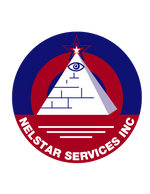HISTORY OF ORISHA OKO
Orisa Orisa Oko is teaching us how to grow our lives and land. It is he who first built a farm. Is the farmer cultivating his land and harvesting their crops to feed his family.
When we see in nature Orisa Oko see their energy cultivating.
Animals are also growers. The animals excrete wastes, fertilize the soil and vegetation that is growing. We see Orisa Oko as the worker bee is carrying pollen and sap from one place to another. Bringing some things that are missing from a remote location to another where necessary. Things that are scarce are made abundantly.
He is the provider of food and life. Is reincarnation for many forms of life also in humans. He knows how to grow things.
Orisha greater deity of the land, agriculture and crops.
Patron of the tenants. It is considered the arbiter of disputes, especially among women.
Is the trial judge held between the Orishas. It is painstaking, hardworking, keeper of secrets and chaste, though the testicles hang him to the ground.
Ensures the prosperity of the land and the bees are his messengers. Infertile women resort to this Orisha of fertility. Alongside Oggue Oké and forms a trinity responsible for the crops, the rains and the inner fire that makes giving birth to the land and animals.
He is responsible for the world food, as it is the land itself, the spirit that animates generator plants and animals. Devour the bodies gives Yewá, although Oya provides for OKO Babalú corpses.
He was the husband of Olokun and are always together. He told the world that Olokun was hermaphrodite and so hid in the seabed.
He quarreled with Yemaya when this seduced him to put him to Chango's secret yam planting.
In Diloggún Eyioko speaks (2). His days on Monday, Tuesday and 12th of each month. Red and white colors. Celebration March 22.
ATTRIBUTES: The acheré or gourd used to call est longitudinal stripes painted dark red and white.
TOOLS: Plowing with oxen and parasol. All kinds of farm tools.
NECKLACES: Seven bills and seven pink or lilac pale turquoise. You can decorate with corals. They also use red striped white beads.
ANIMALS: Paloma, rooster and goat. After slaughter are buried, but in other houses are thrown to the ceiling.
MEALS: All harvested fruits. All kinds of dried meats, yams, beans and slugs.
